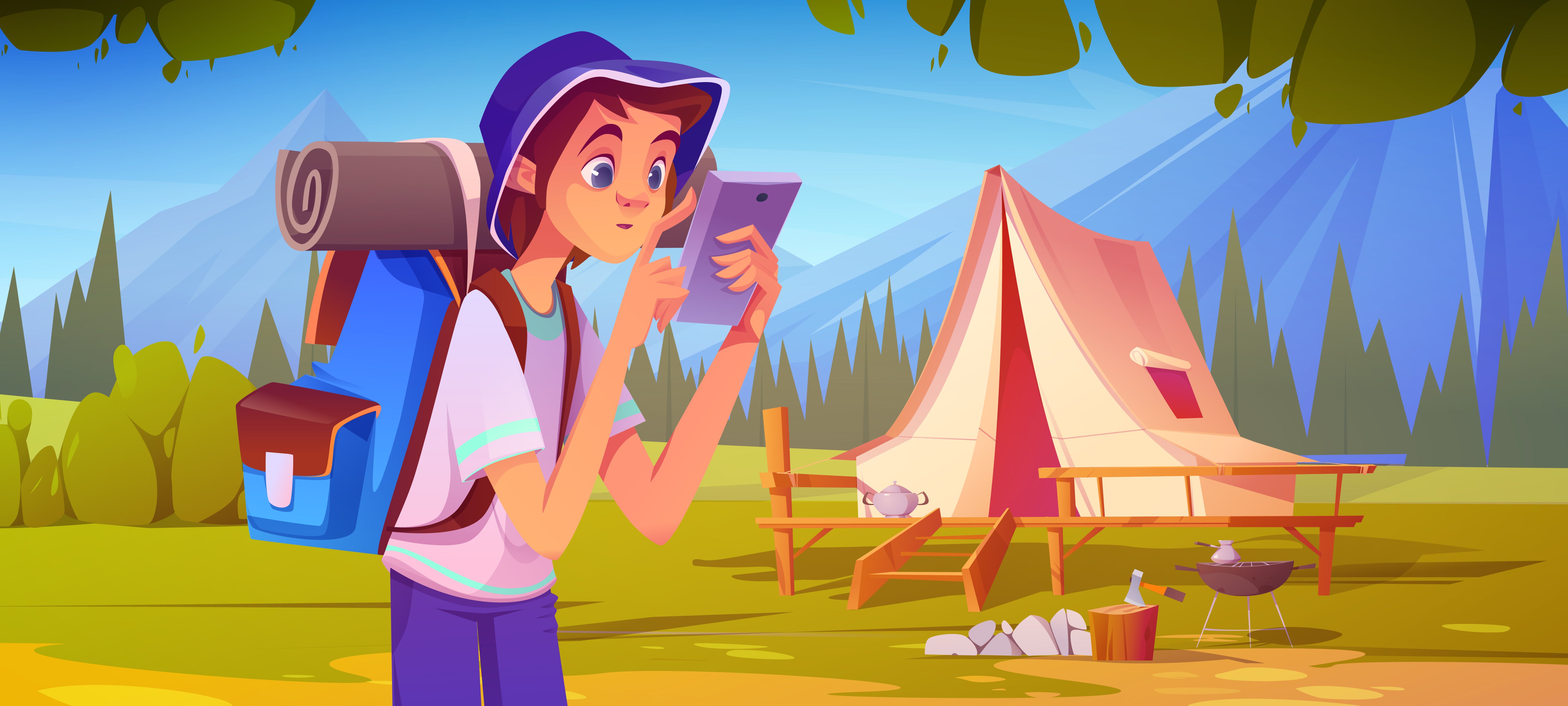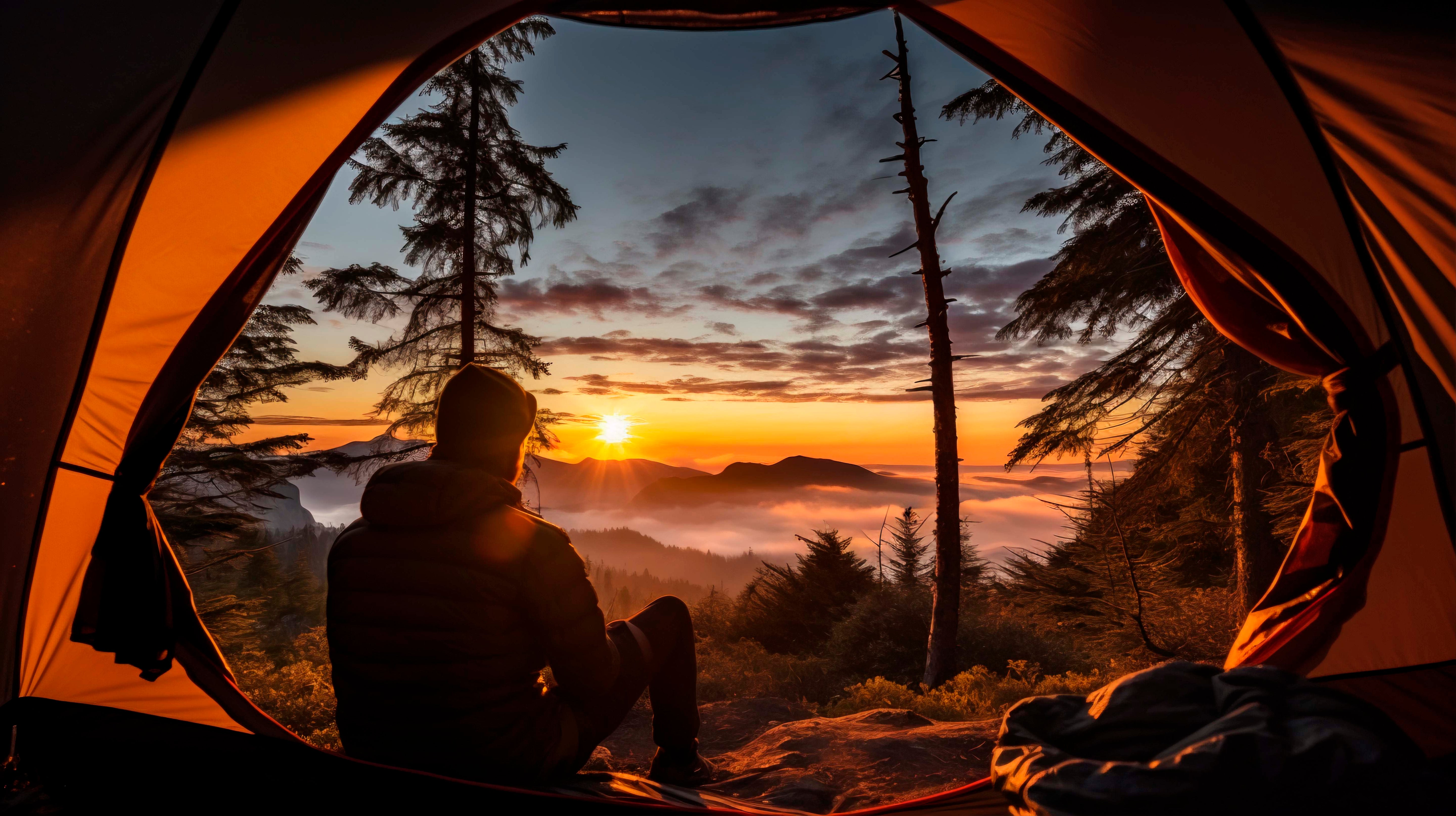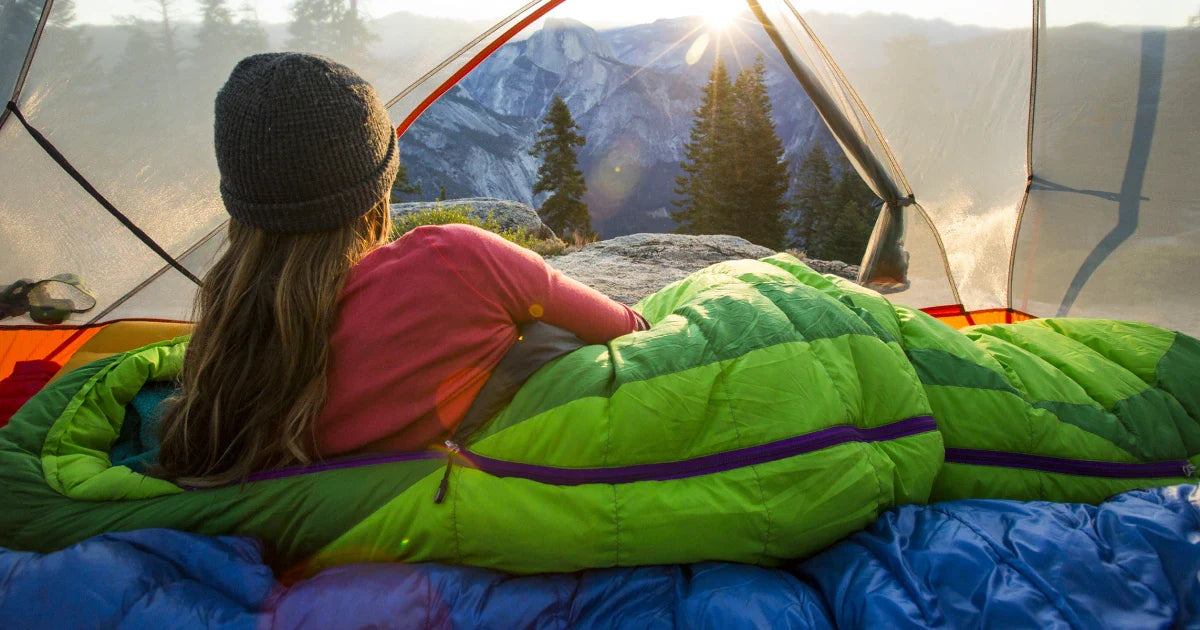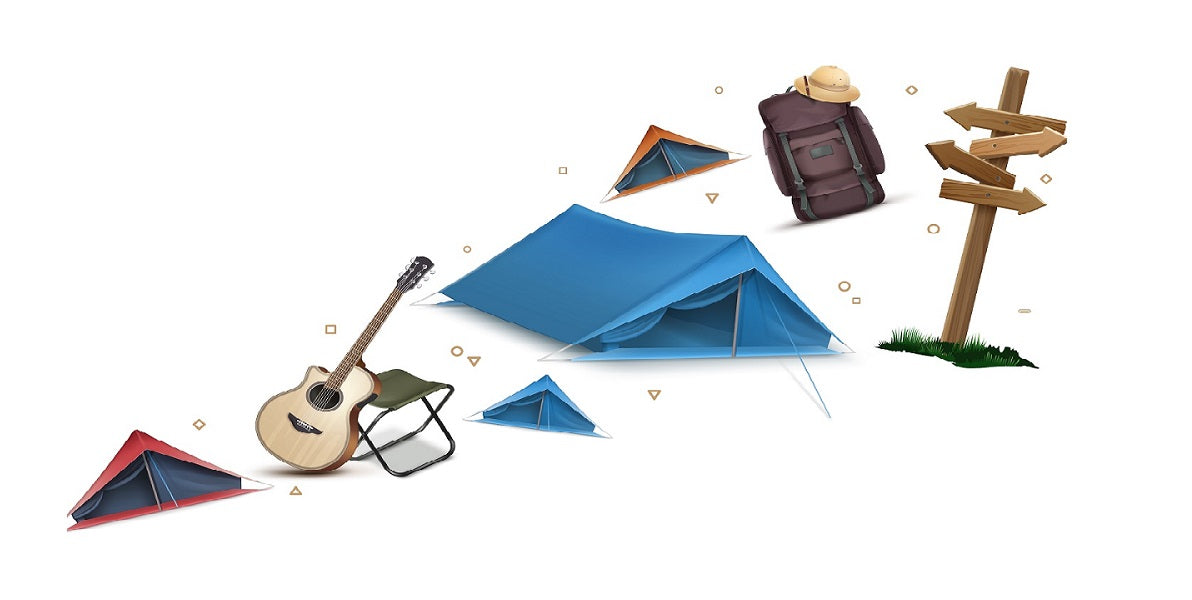
Trekking Essentials 2024: Must-Haves for Your First Hike
Trekking is an invigorating way to experience nature, offering both physical challenge and serene beauty. Whether you're planning your first hike or looking to update your gear for the upcoming season, knowing what to bring is crucial for a safe and enjoyable adventure. This comprehensive guide outlines the essential items you need for your first hike in 2024, ensuring you're well-prepared for the trail ahead.
- Proper Footwear
Importance of Good Hiking Boots
Your feet are your most important asset on the trail. Investing in a good pair of hiking boots can make a significant difference in comfort and safety. Look for boots that provide ample support, have good traction, and are water-resistant.
Tips for Choosing Hiking Boots
- Fit and Comfort: Ensure the boots fit well with room for your toes to move.
- Material: Opt for breathable yet durable materials.
- Break Them In: Wear your boots around the house or on short walks before hitting the trail to avoid blisters.
Top Picks for 2024
Brands like Salomon, Merrell, and La Sportiva continue to innovate with lightweight, supportive designs perfect for both beginners and seasoned trekkers.
- Appropriate Clothing
Layering System
Dressing in layers is crucial for comfort and safety during a hike. The weather can change quickly, especially at higher altitudes.
Essential Layers
- Base Layer: Moisture-wicking materials like merino wool or synthetic fabrics to keep sweat away from your skin.
- Insulating Layer: Fleece or down jackets to retain body heat.
- Outer Layer: Waterproof and windproof jackets to protect against the elements.
Clothing Tips
- Avoid Cotton: Cotton retains moisture and can make you cold.
- Sun Protection: Wear a hat, sunglasses, and consider clothing with UV protection.
- Convertible Pants: These can be converted to shorts, offering versatility in changing weather.
- Backpack

Choosing the Right Backpack
A well-fitting backpack is essential for carrying your gear comfortably. Look for one that distributes weight evenly and has adjustable straps.
Features to Look For
- Capacity: For day hikes, a 20-30 liter capacity is usually sufficient. For longer treks, consider 40 liters or more.
- Compartments: Multiple compartments help organize your gear.
- Hydration System: Many backpacks have built-in hydration bladder compatibility.
Recommended Brands
Osprey, Deuter, and Gregory are known for their comfortable, durable backpacks designed for various trekking needs.
- Navigation Tools
Importance of Navigation
Knowing where you are and how to get to your destination is critical. Even if you’re familiar with the trail, conditions can change, making navigation tools indispensable.
Read Also: The 10 Most Important Things to Bring Outdoor Camping
Essential Navigation Tools
- Map and Compass: Always carry a physical map and compass as a backup.
- GPS Device: A handheld GPS or a reliable smartphone app can provide real-time location tracking.
- Altimeter Watch: Useful for tracking elevation changes and navigating mountainous terrain.
Navigation Tips
- Learn to Use Them: Familiarize yourself with how to use your navigation tools before you set out.
- Battery Backup: Ensure your electronic devices are fully charged and consider carrying extra batteries or a portable charger.
- Hydration System
Staying Hydrated
Proper hydration is vital to maintain energy and prevent dehydration, which can lead to serious health issues.
Hydration Options
- Water Bottles: Sturdy, reusable water bottles are a must. Brands like Nalgene and Hydro Flask offer durable options.
- Hydration Bladders: These fit into your backpack and have a hose for easy sipping on the go.
- Water Purification: Consider carrying water purification tablets or a portable filter, especially if you’re hiking in remote areas where clean water sources may not be available.
Hydration Tips
- Drink Regularly: Sip water regularly rather than waiting until you feel thirsty.
- Monitor Intake: Aim for at least 2-3 liters per day, more in hot or strenuous conditions.
- Nutrition and Snacks
Importance of Proper Nutrition
Your body needs fuel to keep going on the trail. Packing the right food can keep your energy levels stable and make your hike more enjoyable.
Food to Bring
- High-Energy Snacks: Trail mix, energy bars, nuts, and dried fruits are compact and calorie-dense.
- Meals: For longer hikes, consider lightweight, dehydrated meals that only require hot water.
- Fresh Fruit: Apples, oranges, and bananas can provide quick energy and hydration.
Nutrition Tips
- Balanced Diet: Include a mix of carbohydrates, protein, and fats.
- Regular Snacks: Eat small amounts regularly to maintain energy levels.
- Safety Gear
First Aid Kit
A well-stocked first aid kit is essential for treating minor injuries and managing emergencies until help arrives.
Read Also: Conquer Any Climate: 4-Season Tents to Brave the Elements
Must-Have Items
- Bandages and Gauze: For cuts and blisters.
- Antiseptic Wipes: To clean wounds.
- Pain Relievers: Such as ibuprofen or acetaminophen.
- Tweezers: For splinter or tick removal.
- Personal Medications: Any prescribed medications you need.
Safety Tips
- Learn Basic First Aid: Consider taking a first aid course to be prepared for emergencies.
- Personal Locator Beacon (PLB): In remote areas, a PLB can send distress signals to emergency services.
- Shelter and Comfort
Tent or Shelter
If your trek includes overnight stays, a reliable tent or shelter is crucial. Even for day hikes, an emergency bivy or space blanket can provide shelter in unexpected conditions.
Sleeping Gear
- Sleeping Bag: Choose one appropriate for the season and expected temperatures.
- Sleeping Pad: Provides insulation and comfort.
Shelter Tips
- Practice Setup: Know how to set up your shelter before you need to use it.
- Weather Protection: Ensure your tent is waterproof and can withstand wind.
- Trekking Poles
Benefits of Trekking Poles
Trekking poles can significantly enhance your hiking experience by providing stability, reducing strain on your joints, and improving balance.
Choosing Trekking Poles
- Adjustability: Poles should be adjustable to suit different terrains and inclines.
- Weight: Lightweight materials like carbon fiber or aluminum are preferable.
- Grips: Comfortable grips, typically made of cork or foam, help prevent blisters.
Usage Tips
- Proper Height: Adjust the poles so your elbows are at a 90-degree angle when holding them.
- Techniques: Learn proper techniques for using trekking poles to maximize their benefits.
- Emergency Preparedness
Importance of Being Prepared
Being prepared for emergencies can make a critical difference in survival situations. Equip yourself with the knowledge and tools to handle unexpected scenarios.
Read Also: 10 Must-Have Essentials for Your Outdoor Adventure
Essential Emergency Gear
- Whistle: For signaling help.
- Fire Starter: Waterproof matches, a lighter, or a fire starter kit.
- Multi-tool: A versatile tool for repairs and emergencies.
- Emergency Blanket: Compact and can provide warmth.
Emergency Tips
- Leave a Plan: Inform someone of your hiking plan and expected return time.
- Stay Informed: Check weather forecasts and trail conditions before setting out.
- Stay Calm: In an emergency, staying calm and thinking clearly is crucial.
Conclusion
Trekking can be a deeply rewarding experience, offering a unique opportunity to connect with nature and challenge yourself. Being well-prepared with the right gear is essential to ensure your first hike is safe and enjoyable. From proper footwear and clothing to navigation tools and emergency gear, this comprehensive list of essentials will help you tackle the trail with confidence.
As you gear up for your trek in 2024, remember that preparation is key. Equip yourself with the knowledge and tools mentioned above, and embark on your adventure with confidence. Happy hiking!

FAQ:
1. What type of footwear is best for my first hike?
For your first hike, it's essential to invest in good hiking boots. Look for boots that provide ample support, have good traction, and are water-resistant. Brands like Salomon, Merrell, and La Sportiva offer excellent options.
2. How should I dress for a hike?
Dressing in layers is crucial. Start with a moisture-wicking base layer, add an insulating layer like a fleece or down jacket, and finish with a waterproof and windproof outer layer. Avoid cotton and consider clothing with UV protection.
3. What size backpack do I need for a day hike?
For day hikes, a backpack with a 20-30 liter capacity is usually sufficient. Ensure it has adjustable straps, multiple compartments for organization, and hydration bladder compatibility.
4. Do I really need navigation tools if I'm familiar with the trail?
Yes, it's always wise to carry navigation tools such as a map and compass, GPS device, or a smartphone app. Conditions can change quickly, and having these tools ensures you can find your way even if you’re familiar with the trail.
5. How much water should I bring on a hike?
Aim to carry at least 2-3 liters of water per day, more if the conditions are hot or the hike is strenuous. Consider using hydration bladders or sturdy water bottles, and bring water purification tablets or a portable filter if you’re hiking in remote areas.
6. What kind of food should I bring on a hike?
Pack high-energy snacks like trail mix, energy bars, nuts, and dried fruits. For longer hikes, bring lightweight, dehydrated meals that require only hot water. Fresh fruits like apples and oranges are also good for quick energy and hydration.
7. What should be included in a first aid kit for hiking?
A hiking first aid kit should include bandages, gauze, antiseptic wipes, pain relievers, tweezers, and any personal medications. It's also beneficial to know basic first aid procedures.
8. Do I need a tent for a day hike?
For a day hike, you typically don't need a tent, but carrying an emergency bivy or space blanket can provide shelter in unexpected conditions. For overnight hikes, a reliable tent and appropriate sleeping gear are essential.
9. How do trekking poles help, and are they necessary for beginners?
Trekking poles provide stability, reduce strain on your joints, and improve balance. They are beneficial for both beginners and experienced hikers, especially on uneven terrain. Look for adjustable, lightweight poles with comfortable grips.
10. What emergency gear should I carry on a hike?
Essential emergency gear includes a whistle for signaling, a fire starter, a multi-tool, and an emergency blanket. It's also important to inform someone of your hiking plan and check weather forecasts before setting out.
11. How do I choose the right hiking boots?
Choose hiking boots that fit well with room for your toes to move, are made of durable and breathable materials, and provide good ankle support. Make sure to break them in before your hike to avoid blisters.
12. Why is a hydration system important, and what types are available?
A hydration system is crucial for maintaining energy and preventing dehydration. Options include reusable water bottles, hydration bladders that fit into your backpack, and portable water filters or purification tablets for sourcing water on the trail.
13. What should I do if I encounter wildlife on the trail?
Maintain a safe distance, do not feed or approach wildlife, and make noise to avoid surprising animals. If you encounter potentially dangerous wildlife, stay calm, back away slowly, and follow specific guidelines for the animal in question (e.g., bear safety tips).
14. How can I prevent blisters while hiking?
Prevent blisters by wearing well-fitted, broken-in boots, using moisture-wicking socks, and applying blister prevention tape or bandages on areas prone to friction.
15. What should I do if I get lost on a hike?
If you get lost, stay calm, use your navigation tools to determine your location, and try to retrace your steps. If you're unable to find your way, stay put, make yourself visible, and use your whistle or signal for help.
16. Are there any apps you recommend for hiking?
Yes, apps like AllTrails, Gaia GPS, and ViewRanger are excellent for trail navigation, route planning, and tracking your hike. Ensure your smartphone is fully charged and consider bringing a portable charger.
17. How do I ensure my backpack fits correctly?
Adjust the shoulder straps, hip belt, and load-lifter straps so that the weight is distributed evenly and the pack sits comfortably on your hips. The backpack should feel snug and not shift as you move.
18. What kind of insulating layer should I choose?
Choose an insulating layer based on the weather conditions. Fleece jackets are great for moderate temperatures, while down jackets provide excellent warmth for colder conditions. Synthetic insulations are also effective and often more affordable.








